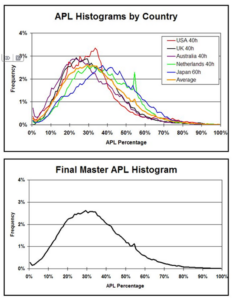Our front page this week in Large Display Monitor, covers a story that Samsung is alleged to have used a special technique to detect test material that is part of the standardised video stream test for power consumption. Once detected, the TV is said to have turned down its brightness and therefore reduced its power consumption. Although Samsung says that it’s not aimed at the tests, but applies generally, testers say that there is little or no impact when general TV content is displayed. The test is used to give energy ratings to consumers in the EU which retailers have to show at the point of sale and these can impact sales.
The IEC test itself was developed after a lot of work by Larry Weber, then of Panasonic, and one of the pioneers of PDP technology. He was frustrated that because the back panel rating of TV sets had to show the peak power consumption, PDP always appeared to have a very high level of power consumption because its peak power consumption was high. However, because the pixels in a PDP are powered up and down according to the level of brightness of that pixel, the overall power consumption of the set depends on the content. So, on average, at the time, the power consumption was the same on a watts/m² basis between LCD and PDP, he believed.
The behaviour of PDP was a contrast to LCDs which had, when Weber started his research, a fixed level of brightness because the backlight had the same brightness all the time. The peak was lower than PDP, but the average power was the same as the peak (although increasingly LCD TV panels have modulated backlights which does break this relationship).
The same principle applies to OLED vs LCDs on mobile phones. While the OLED takes more power when showing a bright screen, or less for a dark one, the LCD always takes the same power.
Weber reported this data from his testsWeber collected different types of video content from around the world and found significantly different average brightness levels (known as Average Picture Level or APL). Research in the 1960s found around 40% APL, but in 2005, at IDW and elsewhere, Weber presented the results of his work. He looked at 220 hours of 18 different kinds of content from Australia, Japan, the Netherlands and the USA. This research founds that most content was below 40% brightness (movies were very dark on average, but day time TV and sport was brighter). Eventually, the IEC created a set of HD videos (published as IEC 62087 and based on his research) that could be used for standardised testing and is specified as the fallback standard for European TV power testing.
Now, the power taken by a TV also depends on the settings used on the TV and so EU regulations also mandate how the controls should be set for testing purposes. In the past, TVs were designed to power up, from new, in “showroom” mode, where the brightness and contrast were boosted, but this increased power consumption, as most users simply don’t change the controls when they install a new TV. However, now, the regulations are designed so that TVs are tested and delivered in the “home” mode.
Gradually, the regulations have extended as makers find ways to exploit the regulations and then in response, regulators have tightened the rules. This reflects human nature.
Sometimes, in recent years, I have taken part in cycling “time trials”. These are timed amateur races, against the clock, where cyclists go, one at a time, round a defined route and the winner is the one that takes the least time. It sounds simple, but, after more than 100 years of individual competitors trying to gain advantage and authorities closing loopholes, the regulations for this simple event run to 8,000 words!
The stories on Volkswagen last week and Samsung this week are gaining attention because brands are not just “wriggling around the edges”, but may have put serious effort into developing technology that is specifically designed to defeat the efforts of regulators. That strikes at the positioning of the brands involved. The brands that want to claim the “moral high ground” of being green will have to be very careful to ensure that this kind of activity is taking place within their companies.
Bob

